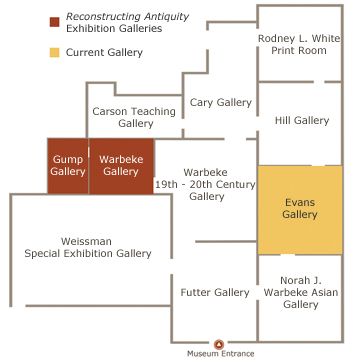Portrait of an old woman
Learn more about the object below
The Romans believed a person’s memory was her sole means to an afterlife. However, as the political system became increasingly tumultuous, there began systematic destruction of societal memories. This process was called damatio memoriae: (literarily: “the damnation of memory”). Damnatio memoriae attempted to distort or destroy society's memory of the deceased, by desecration of that person’s name, or depiction. This process included defacing statues by removing parts of the body or causing them “fatal” injury. This old woman’s nose is missing on a clean cut. Could this and the gash on her right cheek suggest this process? Or can her losses simply be explained by the typical damages to appendages that sculptures so often experience?
Label text by Stephanie Rohr (MHC, '12)
Suggested readings:
Bartman, Elizabeth. "Hair and the artifice of roman female adornment." American Journal of Archaeology. 2001, 105 (1): 1-25.
Varner, Eric R. "Portraits, plots, and politics: "damnatio memoriae" and the images of imperial women." Memiors of the American Academy in Rome. 2001, 46 : 41-93.
Ensslin, Wm. "Valeria." RE 7A: col. 2282.


